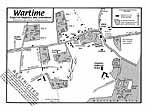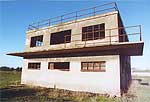The Second World WarIn the Second World War there was a large influx of troops. Officers were billeted in Kingston House, Stone House, New House, the Rectory, Frax House etc. Draycott Wood was stripped of trees and Nissen huts were put up in East and West Copse and on the Warren (now Rimes Close). Troops were also housed in Nissen huts behind Frax House and where Norwood Avenue and Bellamy Close now stand. The Village Hall was used as the PX (American equivalent of the NAAFI) with the canteen and social club on the opposite side of the road. At its peak there were 3000 American troops, who left overnight in 1944, after D-day. The huge hutted camps were later used by displaced persons from Europe. Then Irish labourers building Harwell occupied them followed by squatters and people waiting to be rehoused in new council houses being built at Kennington, Drayton, Stonehill Lane and Latton Close. Eventually the 30 acres of derelict hut sites were demolished for housing. Describing life in the village before the war Sybil Beard wrote in Letter to Pippa, "Except for the houses of the gentry, such as Kingston House, there were no taps, sinks, drains, indoor loos or baths. All our water was drawn from the pump in the front yard. In winter it froze and a red hot poker would be put down it to encourage it to release its water out of the lead spout." After the war, however, one advantage was that the public sewers constructed in wartime to serve hutted camps formed the basis of the village scheme.
Next: Expansion unites >> |



